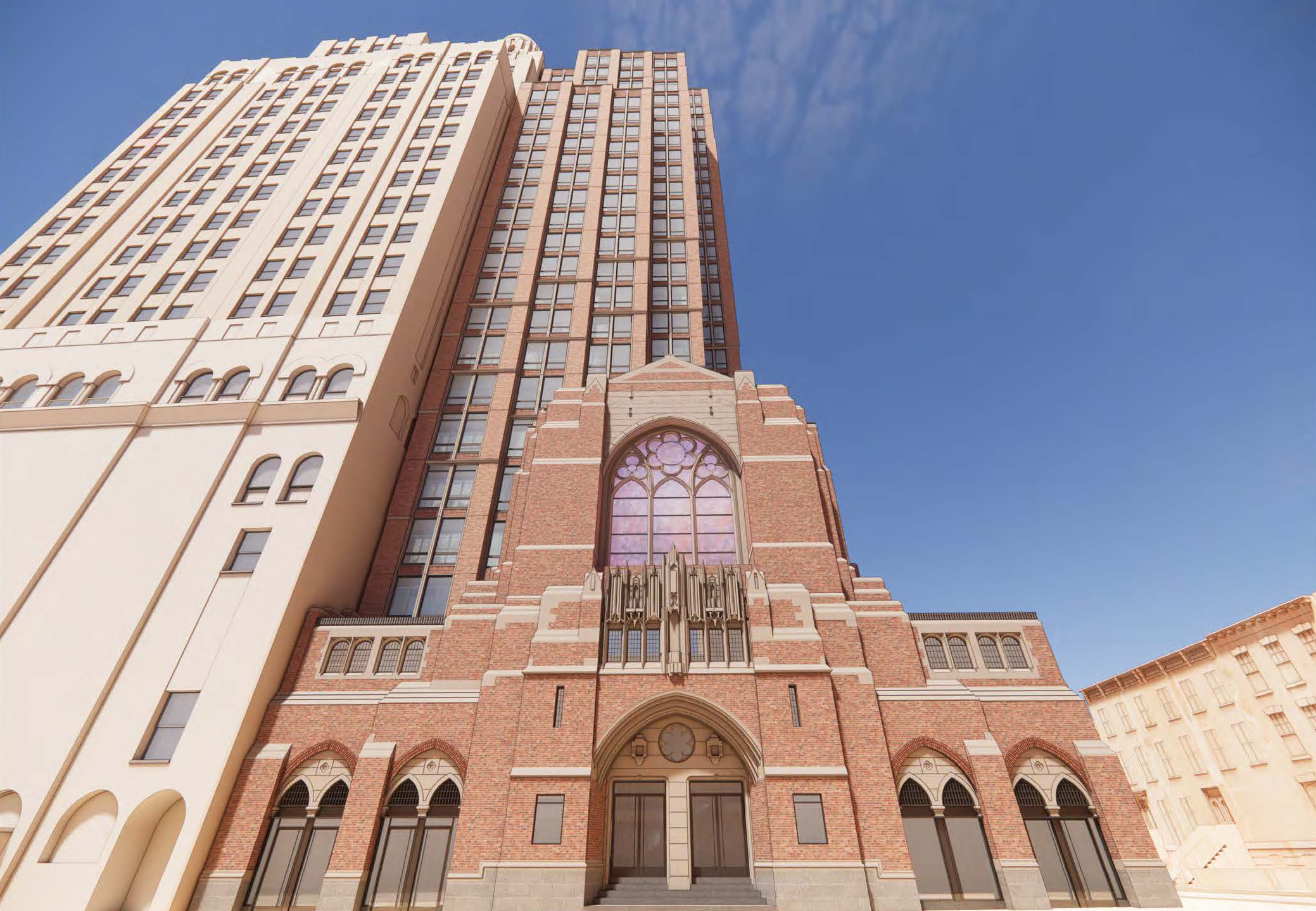Brooklyn Museum Selling Off Brooklyn's Past
The Atlantic has a fascinating article in its June issue about the Brooklyn Museum’s efforts to sell off a collection of important terra cotta decorative carvings salvaged by a donor from construction sites around Brooklyn and Manhattan in 1950s. Ivan Karp, an 83-year-old art dealer who spearheaded the salvage effort and later donated hundreds of…


The Atlantic has a fascinating article in its June issue about the Brooklyn Museum’s efforts to sell off a collection of important terra cotta decorative carvings salvaged by a donor from construction sites around Brooklyn and Manhattan in 1950s. Ivan Karp, an 83-year-old art dealer who spearheaded the salvage effort and later donated hundreds of pieces to the Brooklyn Museum, is now understandably distraught that the museum, which has left many of the pieces exposed to the elements for the past decade, is planning to sell a large part of the collection off through the Harlem salvage dealer Evan Blum of Demolition Depot. This despite a 2007 letter from Arnold Lehman to Karp assuring him that whatever pieces the museum did not use in its redesigned sculpture garden would be returned to Karp, who started a small museum in Charlottesville in 1985 to house these types of objects. Here’s the part of the story when the writer informs Karp of the “deaccessioning” plans:
When I told him that the Brooklyn Museum was planning to auction off so many ornaments through Blum, Karp was astonished. If they’re deaccessioning to sell, that’s very discomfiting, he exclaimed. They should have offered them to me first to buy! As it happened, Karp had phoned Blum, whom he’d known and liked for decades, just the day before. Blum had told him that he was consulting with the museum about the expansion of the sculpture garden, but he did not mention anything about auctions.
Shaking a little, Karp began to leaf through a copy of the binder the museum had sent Blum, which I had brought to the gallery. Good grief! he cried at the sight of a carved brownstone tenement plaque of Abraham Lincoln, which had once been a centerpiece in the sculpture garden. That’s one of the most valuable pieces they have! It’s an historic American figure—how many like that have ever been carved by an anonymous person in homage to Lincoln? This is heartbreaking. A moment later, after peering at a majestic red terra-cotta boy, he said, They’re making serious blunders in many cases.
As he inspected the images, Karp shrank into his chair, until at last, looking very old and defeated, he announced he simply couldn’t look anymore.
Sad.
Update: After the jump, check out the letter to the editor of the Atlantic that was just sent by the Brooklyn Museum.
Ghosts of New York [The Atlantic]
Re: John Freeman Gill article in The Atlantic Monthly on the Brooklyn Museum Collection of Architectural Fragments
The Brooklyn Museum regrets that the author’s comments do not reflect the substantive content of his hours of conversation with Museum staff, or of the extensive and detailed information subsequently provided in response to his questions. The Brooklyn Museum always investigates a range of possibilities for public disposition of works that have entered the deaccession process (the first step in releasing objects from a Museum’s collection), but currently has no agreement with any sales venue regarding the sale of recently deaccessioned architectural fragments. The Museum looks forward to continuing our plans for the full installation of the architectural sculpture collection, in consultation with specialists in the field who in recent years have contributed to the first qualitative assessment of these holdings.
Arnold L. Lehman, Director Brooklyn Museum
Teresa A. Carbone, Andrew W. Mellon Curator of American Art, Brooklyn Museum





I think part of the problem here is perceived “worth”. Obviously, the Bklyn Museum sees little worth in these artifacts. The donor, Ivan Karp, sees great worth, or he wouldn’t have given them to a place where he thought (erroneously) that they would be given a place of respect, preservation, and display.
These objects are examples of sculpture by anonymous artists, rescued from buildings long gone, and are of value for both their artistic worth, and for having come from important, and perhaps in some eyes, unimportant, buildings that made up the fabric of a vibrant and important city – late 19th century Brooklyn. Ok, a lot of people don’t get that, including many on this site. So, if the museum is not willing to be educated by the experts, and not willing to keep a donation from a living donor, then the right thing is to give the donation back to him, especially since he wants them back, and has a place for it. Trying to make money off of the donation, while the man is still breathing – breathing and not happy with it, is really tacky.
wasder — Your comments remind me of Dodge City, KS. They tore down what was left of old Front Street in the 40s, and within a few years, westerns got really big, so they built a replica of the old Front Street on another site to capitalize on and attract tourism. When I was there 25 years ago, they were not so keen on letting folks know it wasn’t a real preservation, more like a movie set.
These are not Brooklyn based exclusively no but they do speak to the general issues of this website. The notion that these artifacts, which represent a long-gone era of industrial craftsmanship, can be so cavalierly treated is completely in line with at least part of the mission statement here.
People tend to forget that it was less than 50 years ago that Penn Station was torn down despite its being designed by perhaps the most famous architectural firm of the early 20th century. And right now I am making a documentary about the fate of the old visitor’s center at Gettysburg, designed by Richard Neutra, which is scheduled for demolition. These cases point to the fact that we tend, as a society, to dismiss things in our not too distant past, only to realize our error a few decades later and have no recourse.
These artifacts are nowhere near the league of the above buildings but still, there is a common theme here. We can’t get these things back once they are gone.
Benson — I redeemed myself? I thought I was in agreement with you this whole time? When did I go off the rails….
And keep in mind — I have NOT commented on the Brooklyn Museums *specific* curatorial decisions or how it’s run. I very much enjoy the Brooklyn Museum and appreciate the wide-range of genres and topics they cover…. I love the selection of the Brooklyn-centric exhibits like the Flatlands farmhouse etc… however, a Brooklyn artifact preservation institution, I hope it never becomes. Then there would be no place for shows like the Rock and Roll photography or Rodin statues.
Hey- we need to clarify. These are not just brooklyn artifacts, right? They are architectural artifacts from all around NYC, and other places in the U.S., aren’t they?
To me (at least) this is not a Brooklyn Historical Focus, but preserving and displaying these falls in line with the other decorative/design/achitecture collections the museum has, and particularly fits with their focus on American architectural decoration, which I will point out again has a tremendouse focus at the museum-
I think what’s grumbling around this post are a few things:
1. People’s feeling that the current musuem administration is being short sighted in selling off one giant collection of stone and terracotta that does tie in with the museum’s historical mission (i.e., they used to be the feature of the museums’s sculpture garden.)
2. Not knowing or trusting that museum will do ther right thing with the collection they will retain (given the odd choices with ‘open storage’ exhibits, selling of the costumes and textiles, etc.. we’ve recently seen. Not to mention that they’ve got half a floor now dedicated to Judy Chicago- which is arguably great art- but also just another table full of terra-cotta.
3. A general feeling of distrust and dislike for the beneficiaries of the sale- i.e. Demo Depot. Who, yes, let a whole building fall down in the east village, who keeps most of their stuff in conditions that don’t improve the current storage of these artifacts, and who trade on the notion that they are rescuing these items, when they are invested in tearing as much of this off their original buildings as possible. (and they are overpriced and not nice.)
Ty;
You have redeemed yourself “somewhat” in my eyes with your 11.08 post.
I hear ya MM. But I have to say, institutions that try to be all things to all people have a hard time getting anything done right… I’m thinking about “mission creep” in Community Colleges. They take on more and more and more, simply because they are willing and, vaguely, able.
Same with Museums.
Of course the BHS doesn’t have enough space for this. But they could… if they decided their next fundraising drive should be to house artifacts like terra cotta facade pieces. The Brooklyn Museum has decided that they *do not* have the space for these items… and don’t want to have the space for these items.
Maybe the BHS should think about changing its focus and bid at this auction? Or perhaps someone could open a Museum of Anonymous Artists in Brooklyn… and bid at this auction.
Besides, tybur, the BHS does not have the room or facilities for a large terra-cotta collection, the irony of having some of the best t-c in Bklyn on its facade, notwithstanding. The Brooklyn Museum has more room. And who says all of our eggs need to be in one basket?(apologies to the punsters on the OT)I would like to think that since we are surrounded by history and historical artifacts, they should be spread around, so that visitors to any of our great institutions can catch a piece of local history. The BHS has limited hours, and a much more literary and ephereral focus.